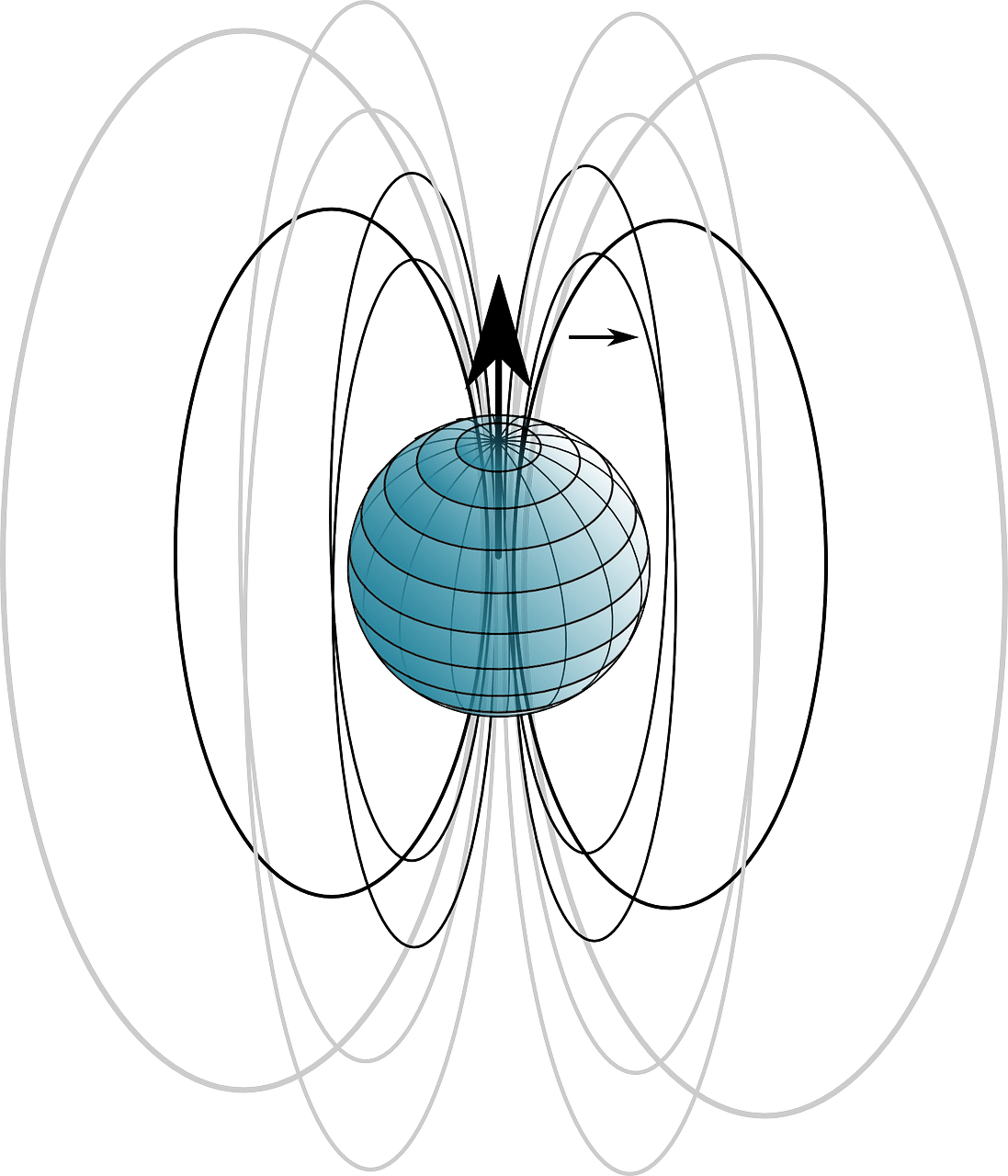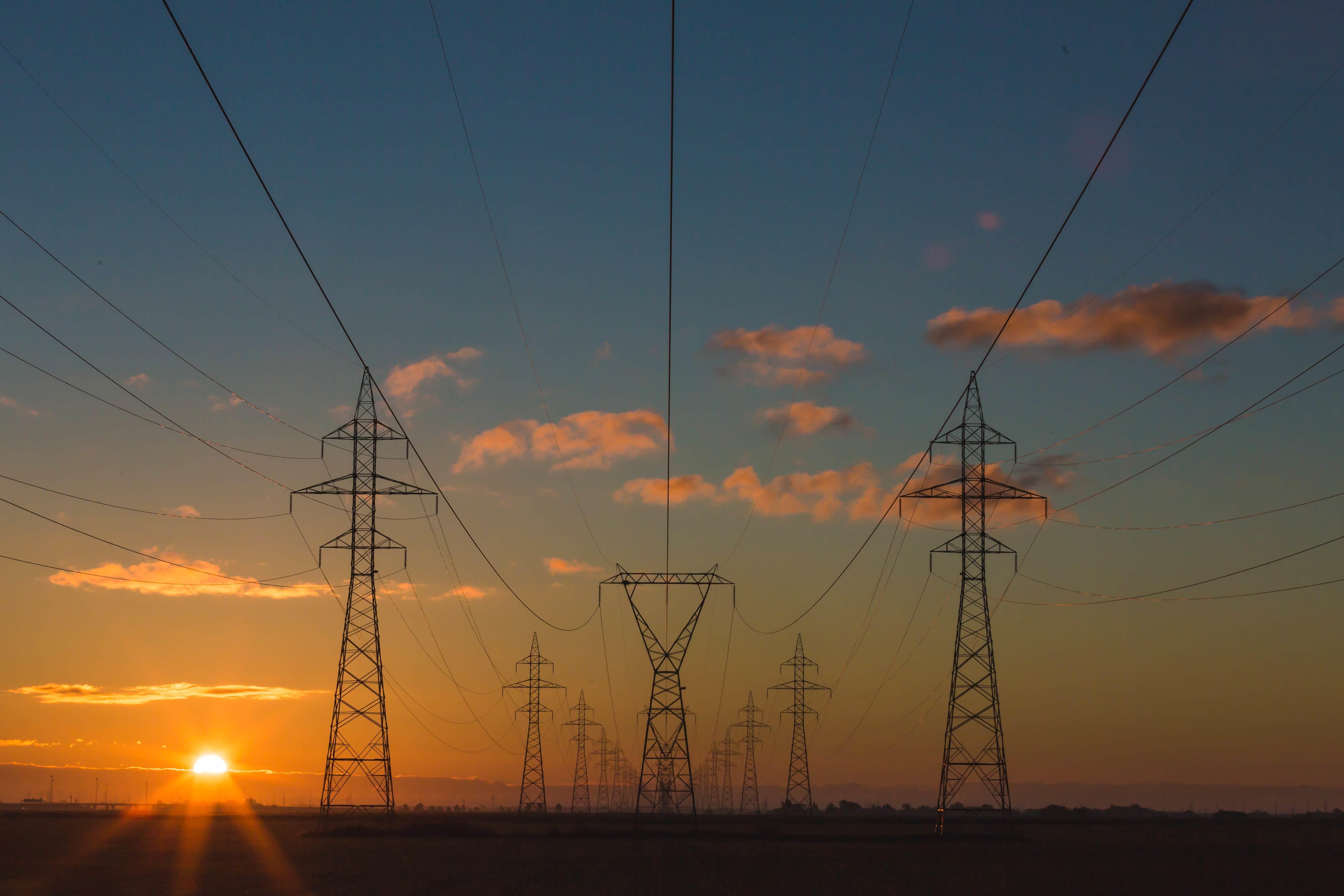The science of electromagnetism is one of the most important fields we know of. For practical applications in industry and for our knowledge of the physical structure of the universe, electromagnetism is central.
Maybe you’d never have realised but, without electromagnetism, we wouldn’t be able to transport or generate electricity. It just wouldn’t happen. We wouldn’t be able to get the massive quantities of electricity we need across the country and into each of our homes. Think about that when you’re turning on the lights, boiling the kettle, or watching the tv.
Meanwhile, by the way, electromagnetism – that curious overlap of electricity and magnetism – forms the bonds of the universe. This is why we can’t really say that anyone ‘invented’ electromagnetism: it was rather discovered – and then calculated to be the force that holds together the different parts of the atom. It is responsible for chemical compounds – and it is also the force that produces light.
Electromagnetism, then, is everywhere. But, here, we are going to look at a particular phenomenon known as electromagnetic induction – the production of electromotive force through the presence of a changing magnetic field.
Don’t worry if that is not clear – because we’ll do a recap of all of the science that you need to know to understand this really quite amazing process.
Find a physics teacher here on Superprof.

What is Electromagnetism?
Let’s start with electromagnetism. What was this again?
Let’s Start with Magnetism
Well, we know what magnetism is, right? Some materials are magnetic – meaning they exert a magnetic force – whilst others are not. In those magnetic materials – and we call those that remain magnetic even beyond an external magnetic field permanent magnets or ferromagnetic materials – the unpaired electrons are all aligned, meaning that they exert a force in a particular direction.
Definition Of Electromagnetic Induction
Electromagnetic induction is the process of generating an electric current in a conductor or coil of wire by exposing it to a changing magnetic field. This phenomenon was first discovered by the English scientist Michael Faraday in 1831 and is a fundamental principle in the study of electromagnetism.
When a conductor or coil of wire is placed within a changing magnetic field, an electromotive force (EMF) is induced in the conductor. The EMF creates a flow of electric current in the conductor, which can be used to power electrical devices or perform other useful functions.
The amount of EMF induced in the conductor is directly proportional to the rate of change of the magnetic field, as described by Faraday's law of electromagnetic induction. This law states that the EMF induced in a conductor is equal to the rate of change of magnetic flux through the conductor.
Electromagnetic induction is used in many important applications, such as in generators, transformers, and motors. It is also a key principle in the study of electromagnetism and is essential to the development of modern technology.
And Electromagnetism?
An electromagnet, meanwhile, is a magnet powered by an electric current.
Electricity itself has a magnetic force. And whilst this is present even in just a simple copper wire – and, as we said, in all of the miniscule measurements of electric charge across every atom and chemical bond – scientists have found ways of making that force much stronger.
Generally, electromagnets use coils of wire, with each coil winding around a piece of metal – usually iron. This particular thing is called a solenoid. When there is an electric current flowing through this wire, the magnetic field produced is centred on the magnetic core, the piece of metal at the centre of solenoid. These electromagnets are super strong – and, as soon as you turn off the electricity, the solenoid stops being magnetized.
So, yes, really an electromagnet is really just a really strong magnet. However, this particular combination of electricity and magnetism is incredibly useful. And one of its most important applications is in electromagnetic induction – the productive of electromotive force (emf or induced voltage) through the movement of a magnetic field.
These magnets, then, produce electricity. Do you see why they might be useful now?
Principle Of Electromagnetic Induction
The principle of electromagnetic induction is a fundamental concept in physics that describes the relationship between a changing magnetic field and the creation of an electric current in a conductor. The principle was discovered by the English scientist Michael Faraday in the early 19th century.
The principle states that when a conductor is moved through a magnetic field, or when a magnetic field is moved past a conductor, a voltage is induced in the conductor. This voltage, also known as an electromotive force (EMF), causes a current to flow in the conductor. The strength of the induced voltage depends on the strength of the magnetic field, the speed at which the field changes, and the angle between the field and the conductor.
The principle of electromagnetic induction can be summarized by Faraday's law, which states that the induced EMF in a conductor is equal to the rate of change of the magnetic field through the conductor. This means that the faster the magnetic field changes, the greater the induced EMF will be.
Electromagnetic induction is used in many important applications, including generators, transformers, motors, and induction heating. It is a fundamental principle in the study of electromagnetism and is essential to the development of modern technology.
Check out our guide to magnetism and electromagnetism!

A Brief History of Electromagnetic Induction
To best explain the process and importance of electromagnetic induction, let’s trace its history briefly. Let’s go back to the very first experiments that brought it to light – way back then in the 1830s.
At this point, we already had the horseshoe electromagnet, thanks to the invention of William Sturgeon – and we already knew that electric currents wielded a magnetic force of their own, due to the findings of Ampere and Oersted.
However, it was a man called Michael Faraday that discovered the principles of electromagnetic induction, when he conducted a little experiment published in 1831.
Check for more physics practical class 12 here.
Faraday’s law of Electromagnetic Induction
Faraday's law of electromagnetic induction is a fundamental principle in physics that describes the relationship between a changing magnetic field and the production of an electric current in a circuit. The law was discovered by the English scientist Michael Faraday in 1831.
The law states that a changing magnetic field induces an electromotive force (EMF) in a closed circuit. This means that if a magnetic field is moving or changing in strength, it will create a voltage or electric potential difference across a conductor or coil of wire that is placed within the field. The amount of induced EMF is directly proportional to the rate at which the magnetic field changes, and is given by the equation:
EMF = -d?/dt
where EMF is the electromotive force, ? is the magnetic flux through the circuit, and t is time. The negative sign indicates that the direction of the induced EMF is opposite to the direction of the change in magnetic field.
Faraday's law of electromagnetic induction has many practical applications, including the generation of electrical power in generators, the operation of transformers, and the function of many electronic devices such as motors and speakers. It is also an important concept in the study of electromagnetism and is a key principle in the development of modern technology.
How Does Electromagnetic Induction Work?
So, what exactly is this thing that Faraday discovered? Simply put, the importance of this discovery was that changes in magnetic fields can induce electrical currents.
As we know, electrical currents have a magnetic field. This is what solenoids are all about. But, as Faraday did, if you interact with that magnetic field with another magnet, the potential or voltage of the electric current is changed.
If you were to move such a magnet in and out of a coil, you’d feel a fair bit of resistance. But with this resistance is produced the current flow. Speed up the movement of the magnet and the induced current will increase; strengthen the magnetic field and the same happens.
In this way, then, magnets can be used to turn kinetic energy into electric energy – as by moving the magnet, the current flows. This is precisely how things like generators work: they generate electricity through the movement of a magnet in a magnetic field.
Maybe you can see now why this was such an incredibly important discovery.

Applications of Electromagnetic Induction
To clarify this phenomenon further, let’s take a look at one of the major technologies that applies it. That’s the electric generator, a tool that is really incredibly common. From power stations – in which fuels are burned, say, to power the magnetic field – to cars and teeny-tiny motors in all sorts of different equipment, these things are everywhere.
Electromagnetic induction has many important applications in modern technology. Here are some of the most common applications:
- Generators: Electromagnetic induction is used to generate electrical power in generators. A generator consists of a coil of wire that is rotated within a magnetic field. The rotation of the coil within the field causes a changing magnetic flux, which induces an electromotive force (EMF) in the coil. This EMF creates a flow of electric current in the coil, which can be used to power electrical devices.
- Transformers: Transformers are used to transfer electrical power from one circuit to another. They work on the principle of electromagnetic induction, where a changing magnetic field induces an EMF in a coil of wire. Transformers are used in power distribution systems to step up or step down the voltage of electrical power.
- Motors: Motors use electromagnetic induction to convert electrical energy into mechanical energy. They consist of a coil of wire that rotates within a magnetic field. The changing magnetic field induces an EMF in the coil, which creates a flow of electric current. This current generates a magnetic field that interacts with the original magnetic field, causing the coil to rotate.
- Magnetic levitation: Electromagnetic induction is used in maglev trains, which use magnetic levitation to float above the tracks. The trains are propelled by the interaction of magnetic fields between the train and the track.
- Induction heating: Electromagnetic induction is used in induction heating, where a changing magnetic field is used to heat a metal object. The metal object is placed within a coil of wire, and a high-frequency alternating current is passed through the coil. The changing magnetic field induces eddy currents in the metal, which causes it to heat up.
- Metal detection: Electromagnetic induction is used in metal detectors to detect the presence of metal objects. The detector contains a coil of wire that creates a changing magnetic field. When the field encounters a metal object, it induces an EMF in the object, which can be detected by the detector.
But, given this high voltage, you need transformers for this current to be usable. And you can learn all about transformers in our article here.
Find physics tutor here on Superprof.















